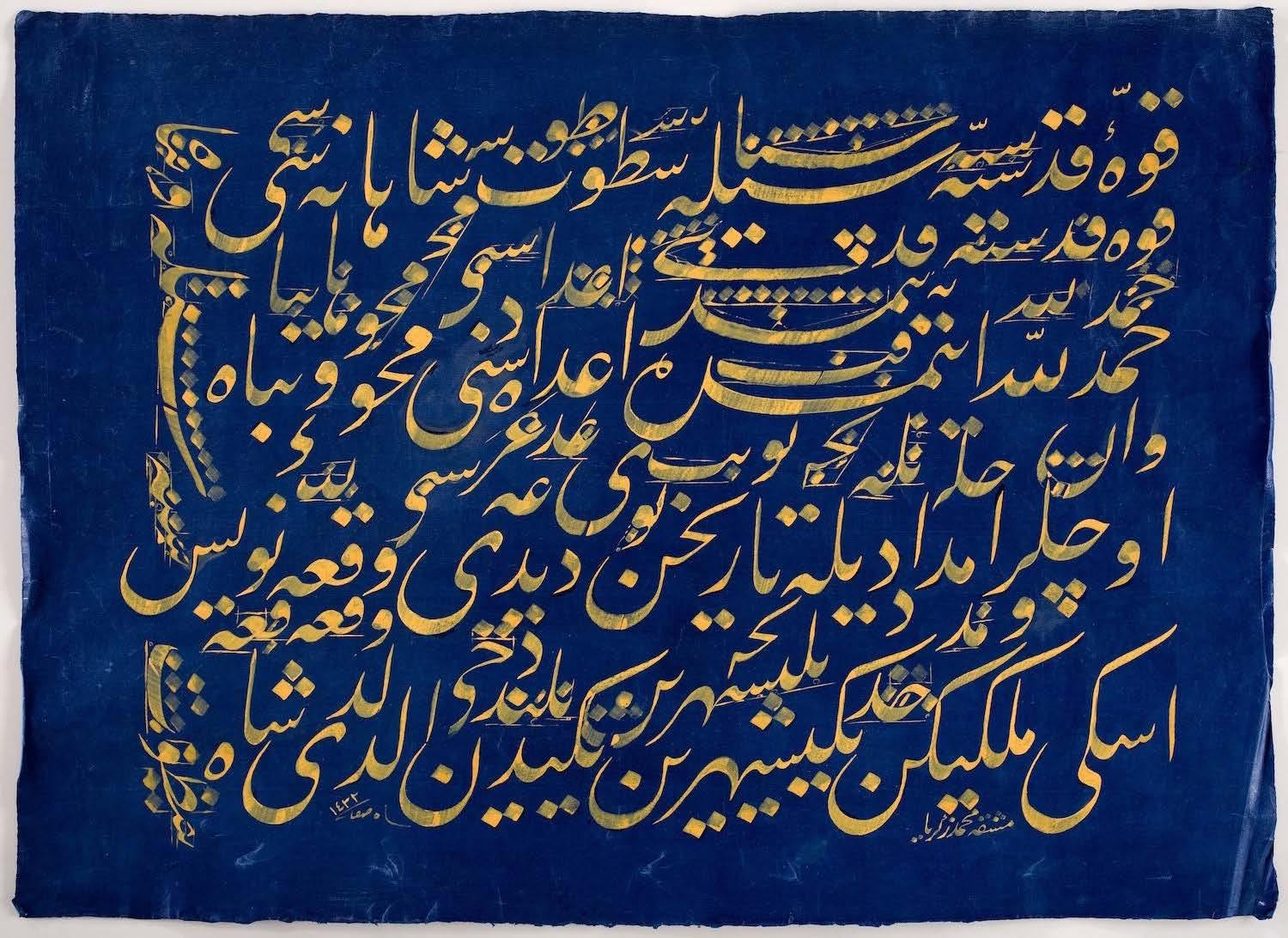
12 minute read
What We've Been Up To
CALLIGRAPHY BY MOHAMED ZAKARIYA
Exhibition In Depth: "Living Line, Living Legacy"
Advertisement
QAIC newest exhibition in partnership with the Reed Society for the Sacred Arts (RSSA) showcases the inherited legacy of the art of Islamic calligraphy and the creatives preserving the craft for future generations of calligraphers.
Officially unveiled to the public on April 11, 2022, QAIC's new calligraphy exhibition in partnership with the Reed Society for the Sacred Arts (RSSA), “Living Line, Living Legacy,” features the works of renowned master calligrapher Mohamed Zakariya and other prominent calligraphers from the United States and Europe, many of whom were students of Zakariya before going on to master the art. According to Aisha Iman, Executive Director of the Reed Society for the Sacred Arts, this exhibition "brings to a new audience a chain of artistic transmission and accomplishment that has progressed through a number of schools and centers, always in action somewhere, from 7th-century Arabia to the present." While not the first of QAIC's exhibitions featuring Islamic calligraphy (QAIC hosted twenty large-scale calligraphy paintings by master calligrapher Sabah Arbilli in 2021), "Living Line, Living Legacy" tells the story of Islamic calligraphy from its origins and how this beautiful practice of utmost precision is sustained and celebrated in the modern day through the efforts of teachers and students alike.
The origins of Islamic calligraphy can be traced to Zayd ibn Thabit and his associates, who produced the first copies of the Qur'an and formed the first writing atelier for the production of books. The legendary encouragement of these early calligraphers came from Ali ibn Abi Talib, cousin and son-in-law of the Prophet Muhammad (peace be upon him).
Historical sources tell the stories of luminaries such as Ibn Muqla, Ibn al-Bawwab, Yaqut al-Mustasimi, and Şeyh Hamdullah, who, in the early centuries, spread the art of Arabic-script calligraphy throughout the Islamic world. Mohamed Zakariya has continued that trend by introducing students in the United States to this living artform. Zakariya’s students are now becoming prominent here and abroad.
Celebrating the UNESCO designation of Arabic calligraphy as an Intangible Cultural Heritage, this gallery showcases the work of a family of calligraphers who all have received their ijazah, or teaching license. Coming from different paths and backgrounds they are linked by the deep love they have discovered pouring over these letters and immersing themselves in an artistic practice that merges breath, ink, and space. This meditative art is a foray into the worlds of languages, texts, poetry, geometry, travel, and genuine community
On May 7, 2022, QAIC and RSSA will host the “Living Line, Living Legacy” symposium at QAIC's headquarters and feature presentations from notable calligraphers and curators, including Mohamed Zakariya, Dr. Maryam Ekhtiar, curator for the Department of Islamic Art at The Metropolitan Museum of Art and author of "How To Read Islamic Calligraphy," Dr. Ashley Dimmig of the Walters Art Museum, and more.
To learn more about the "Living Line, Living Legacy" exhibition, the symposium, or the calligraphers featured in the exhibition, visit the QAIC exhibitions webpage at www.qataramerica.org/exhibitions/.
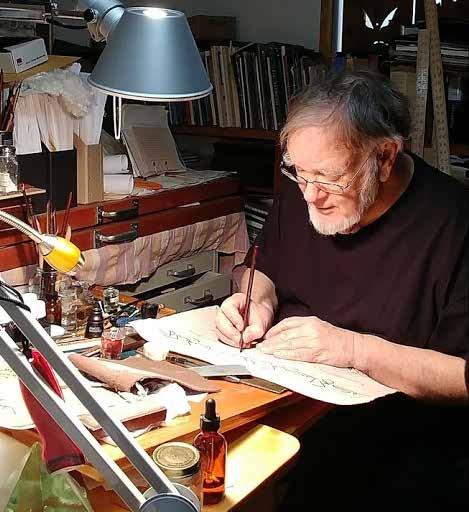
About Master Calligrapher Mohammed Zakariya
Mohammed Zakariya entered the world of Islamic penmanship in 1961. Growing up in in Los Angeles, California, he was inspired by the artists and the surrounding art. Working as a machinist in some of the little factories that dotted Southern California, Zakariya learned about the aesthetics and precision which he applies to his art today.
Zakariya was introduced to calligraphy for the first time in the window of an Armenian carpet store in Los Angeles. Since then, he travelled to Morocco and aquired a fascinationa and appreciation for Islam and Islamic calligraphy.
With an extensive and prolific career, Zakariya has studied under Turkish master calligrapher Hasan Celebi and received his diploma in 1988 at the Research Center of Islamic History, Art, and Culture in Istanbul, Turkey, making him the first American to acheive this feat.
To learn more about Zakariya's legacy, visit www.mohamedzakariya.org.
18

FEATURED


25 22
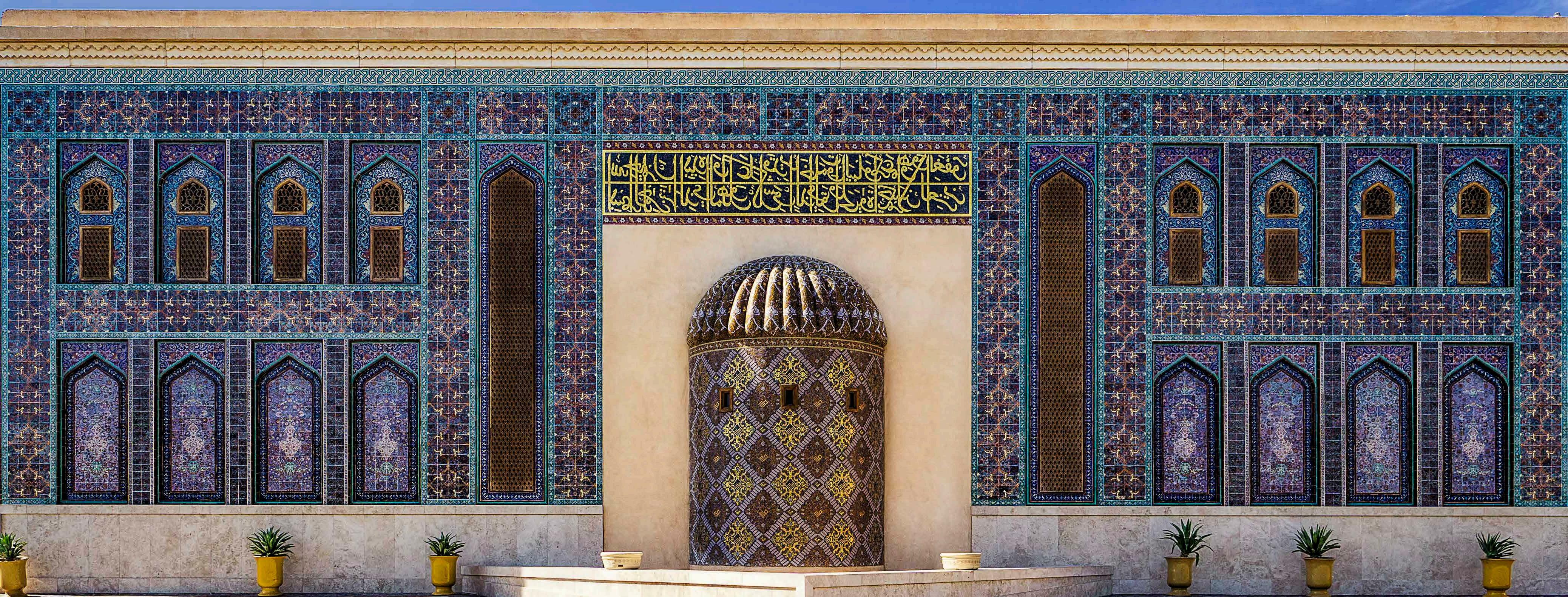
34

Arabic:
Credit: "History of Bayâd and Riyâd" ("Hadih Bayâd wa Riyâd"), Maghrebi or Andalusian manuscript, 13th century
The language of poetry
Since pre-Islamic times, Arabs were noted for producing prolific poetry. Their mastery of poetry is something that distinguishes them as a unique quality of their learning and the importance of the Arabic language. A vivid aspect of Arab culture, poetry is one of the most important facets that identify the Arabs as a distinct civilization. This literature depicts most clearly the history of Arabs by grasping the ideals and images of customs, traditions, and values.
BY YOUSRA KHALIL
For centuries, poetry has been an integral cultural component in the Muslim and Arab worlds. It is a highly regarded form of art and creativity, and its extensive use throughout history makes it one of the highest forms of Arab and Islamic cultural expression. Arabic itself is a linguistically intricate and eloquent language and is a significant identifier of what it means to be "Arab." Through the ages, Arabs have not only used poetry as a form of art used to creatively express emotions and thoughts, but also as a means to exude cultural pride.
Literally translated to “ode,” the word for poem in Arabic is qasida, an ancient Arabic word and form of writing poetry. Some of the most famous qasayed (plural of qasida) are known as the seven Mu’allaqat, a group of seven long Arabic poems. Al Mu’allaqat means "The Suspended Odes" or "The Hanging Poems" because they were hung on display in the Kaaba in Mecca. Some scholars have also suggested that the hanging is figurative, as if the poems "hang" mentally for the reader as they ponder their meaning.
The traditional use of poetry as a form of communication and recorded history emerged in the 7th century. Poets composed these narratives and stories to be passed down through generations, and hence poetry evolved as the primary linguistic precedent to the Arabic text in the Qur’an. Arabic poetry reflects the depth and richness of the language itself as it is naturally poetic and eloquent in verse and flow. However, poetry became the language of the elite, an admirable art that was mastered by few to be enjoyed by many.
The Arabic language is integral to Arabs not only as a means of communication, but also as a sense of heritage and identity with Arabic considered the official language in each Arab League member state. In fact, the term for Quranic Arabic or Modern Standard Arabic (MSA), fusha, literally means "the eloquent." Poetry has always been highly appreciated in the Arab world even before the arrival of Islam. Throughout Middle Eastern history, poets are often figures who
This Arab painting from between circa 1218 and circa 1219 AD is the frontispiece, or cover artwork, of a manuscript of Kitāb al-Aghānī (Book of Songs) of Abu al-Faraj al-Isfahani. It is considered to be a representation of Badr al-Din Lu'lu' as the name of Badr al-Din Lu'Lu' (ولول نيدلا ردب) is readable on the tiraz bands of the sleeves of the King.
A 16th/17th-century Arabic manuscript containing the old Arabic poems known as Al-Mu'allaqāt along with some brief commentary (in red) on individual words. These pages show the end of the poem of Imru' al-Qays and the beginning of Labīd’s poem.
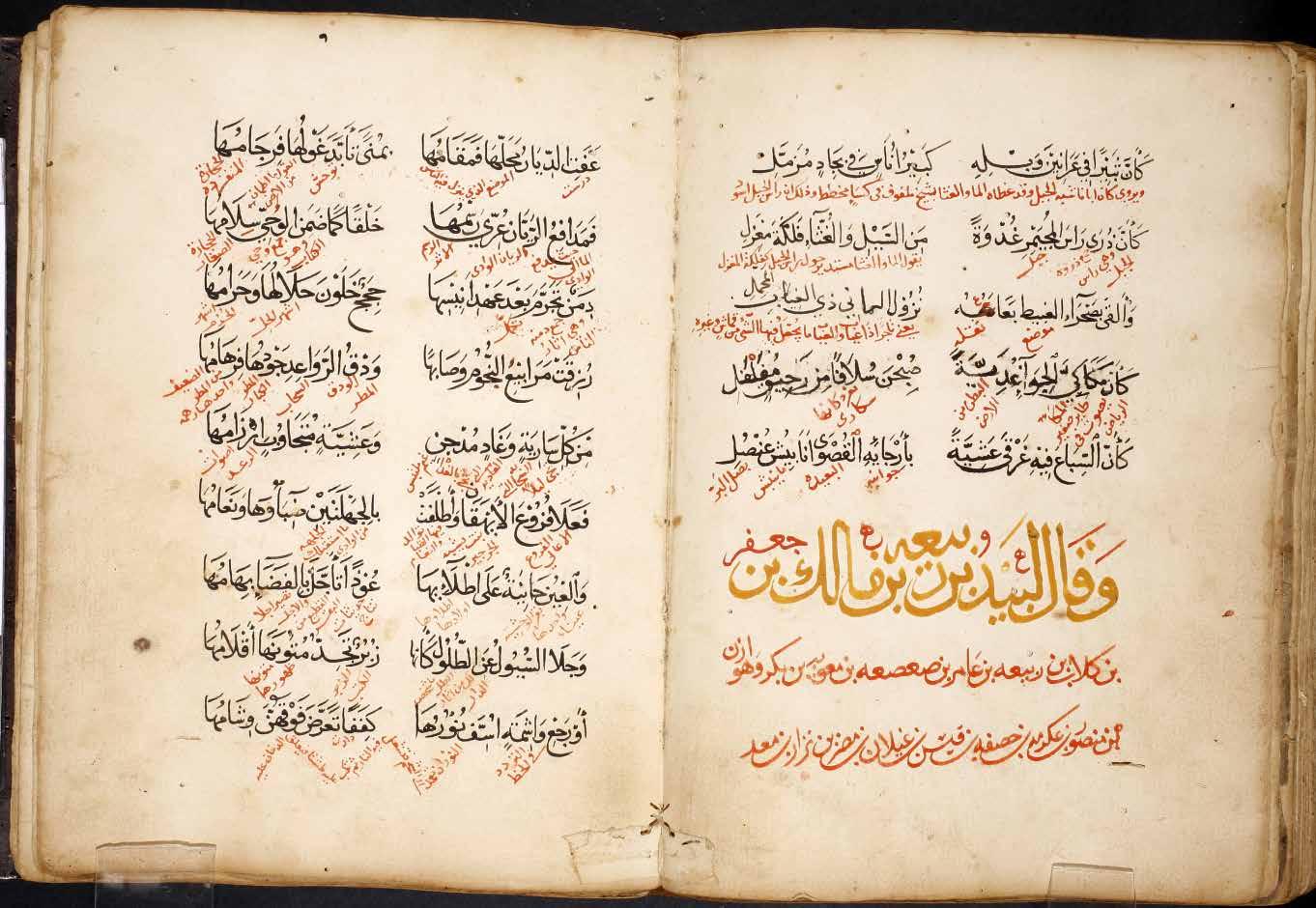
CREDIT: NEAR EAST SCHOOL OF THEOLOGY IN BEIRUT, LEBANON
are celebrated for their linguistic abilities. For Arabs, poetry was not only an art form, but rather a source of identity, history, and knowledge. It was more than a means of entertainment, becoming a way of life and a reference tool for facts.
Many times, poems were used to highlight certain environmental, social, and religious elements. Topics such as horses, camels, and the Arabian desert are recurrent themes in Arab poetry, reflecting the importance of the natural world amongst Arab population. Different types of poetry are also distinguished through their themes and motifs. For instance, love poems are known as ghazal, satirical poetry is called hija, while elegies are referred to as ritha. During pre-Islamic times, themes such as wine and war had their own category, shedding light on what ideologies were important to the Arabs during certain periods and how they changed over time.
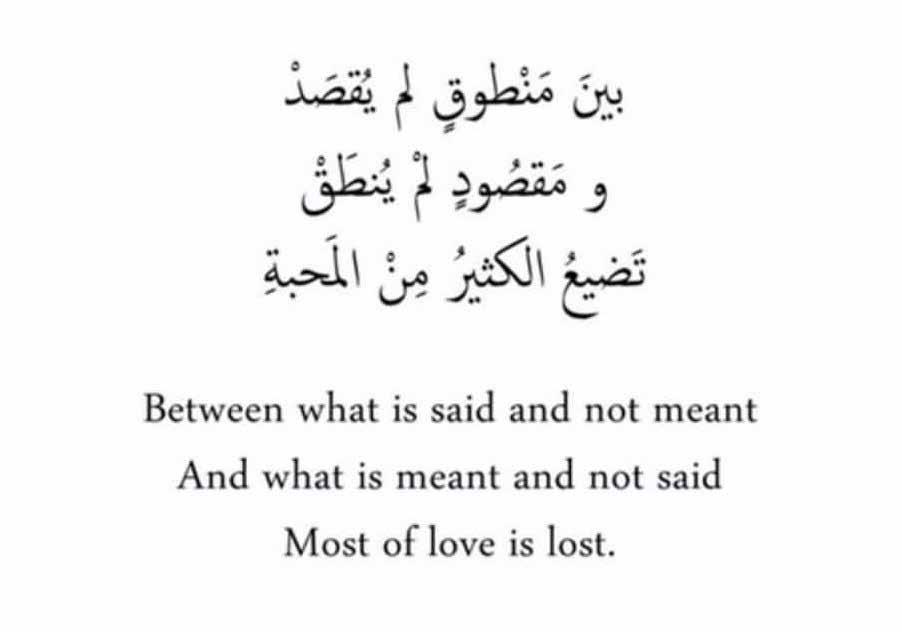
A short poem by Gibran Khalil Gibran (commonly referred to as Kahlil Gibran), a Lebanese-American writer ("The Prophet"), poet and visual artist who carried on the tradition of Arabic poetry into the modern era.
ينتجوزت
ةليبقلا فنأ مغر ينتجوزت
ةليبقلا فنأ مغر يعم ترفاسو
ةليبقلا فنأ مغر رمعو بنيز ينتطعأو
؟ اذالم :اهلأسأ تنك امدنعو
اهردص ىلإ لفطلاك ينذخأت تناك
.يتليبق تنأ كنلأ : متمتتو
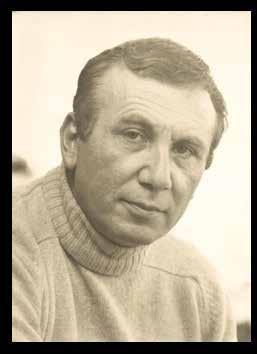
Nizar Qabbani
ينابق رازن -
نجسلا
:مدآ نبا لاق
صفقلا اذه يف ريفاصعلل ىبوط
،لقلاا ىلع ،اهنا
اهنجس دودح فرعت
يثوغربلا ديرم -
She Married Me
She married me in spite of the tribe
And she traveled with me in spite of the tribe
And she gave me Zeynab and Omar in spite of the tribe
And when I used to ask her: why?
She would take me like a child against her chest
Because you are my tribe.
- Nizar Qabbani
Prison
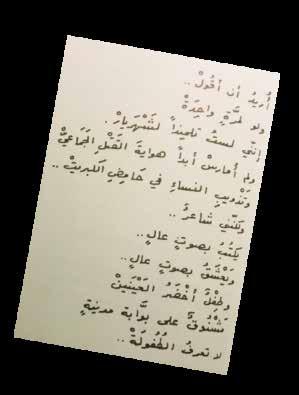
The son of Adam Said:
Blessed are the birds in their cages
For they, at least, know the limits
Of their prisons
- Mourid Al Barghouti
A Sporting Effort

The Origins of Qatar National Sports Day
In December of 2011, Qatar National Sports Day was created. Presently, Qatar’s National Sports Day acts as an important annual occasion (on the second Tuesday of every February) with the goal of engaging the local community in Qatar with sports activities and fostering the adoption of a healthy lifestyle.
BY KHALID MUBARAK, QAIC FELLOW
Ever since our humble beginnings as huntergatherers, mobility has always been an intrinsic part of being human. Movement and the need for mobility are visible all over the world, crossing cultural boundaries, shared by people. In Ancient Greece, this love for sports was highlighted in the Olympiads, an avid celebration of sports and movement, and in Feudal Japan, sumo wrestling matches were friendly competitions between clans. This love and celebration for sport have endured to this day, with each sport gaining massive followings and passionate lovers. When looking around the world, the State of Qatar has one of the largest celebrations of sport ever, and it comes during Qatar National Sports Day.
It is a massive celebration of sports and sportsmanship across the country, with an almost endless number of activities littered across the country’s many sporting venues as well as a break for students and most employees as well. It is a reminder of the value and importance of sports. In 2011, by Emiri Decree No. 80, every second Tuesday of February would be declared as Qatar National Sports Day. According to Qatar’s national e-Government website, Hukoomi, National Sports Day was established to “promote sports and to educate the local population on ways to reduce health risks associated with an inactive lifestyle, such as coronary heart disease and diabetes.”National Sports Day is a paramount reminder about the importance of health and why it is so important for humanity. In Qatar, there is an alarming rate of obesity, as well as diabetes.
According to the World Obesity Federation, Qatar has a national obesity risk rating of 7.5 out of 10, making it dangerously high. It is even higher for childhood obesity with a whopping 8.5 out of 11. With the inclusion of sports and activity in your daily schedule, it may lessen the risk of you contracting dangerous illnesses like diabetes, heart disease, and more.
As well as being an incubator of sports and the love of sports, National Sports Day is a living, breathing reminder of a new, vibrant, sports culture in Qatar. For decades now, a brewing, budding sports culture has emerged. This new love of sports has blossomed into a wide array of sports that highlight Qatari culture too. For example, the Al Shaqab organization was founded in 1992 by HH Sheikh Hamad bin Khalifa Al Thani, the Father Emir, as an organization built on protecting and preserving the ancient Arabian equestrian culture. Since then, it has stemmed into a flowering beacon of
CREDIT: QATAR MINISTRY OF PULBIC HEALTH
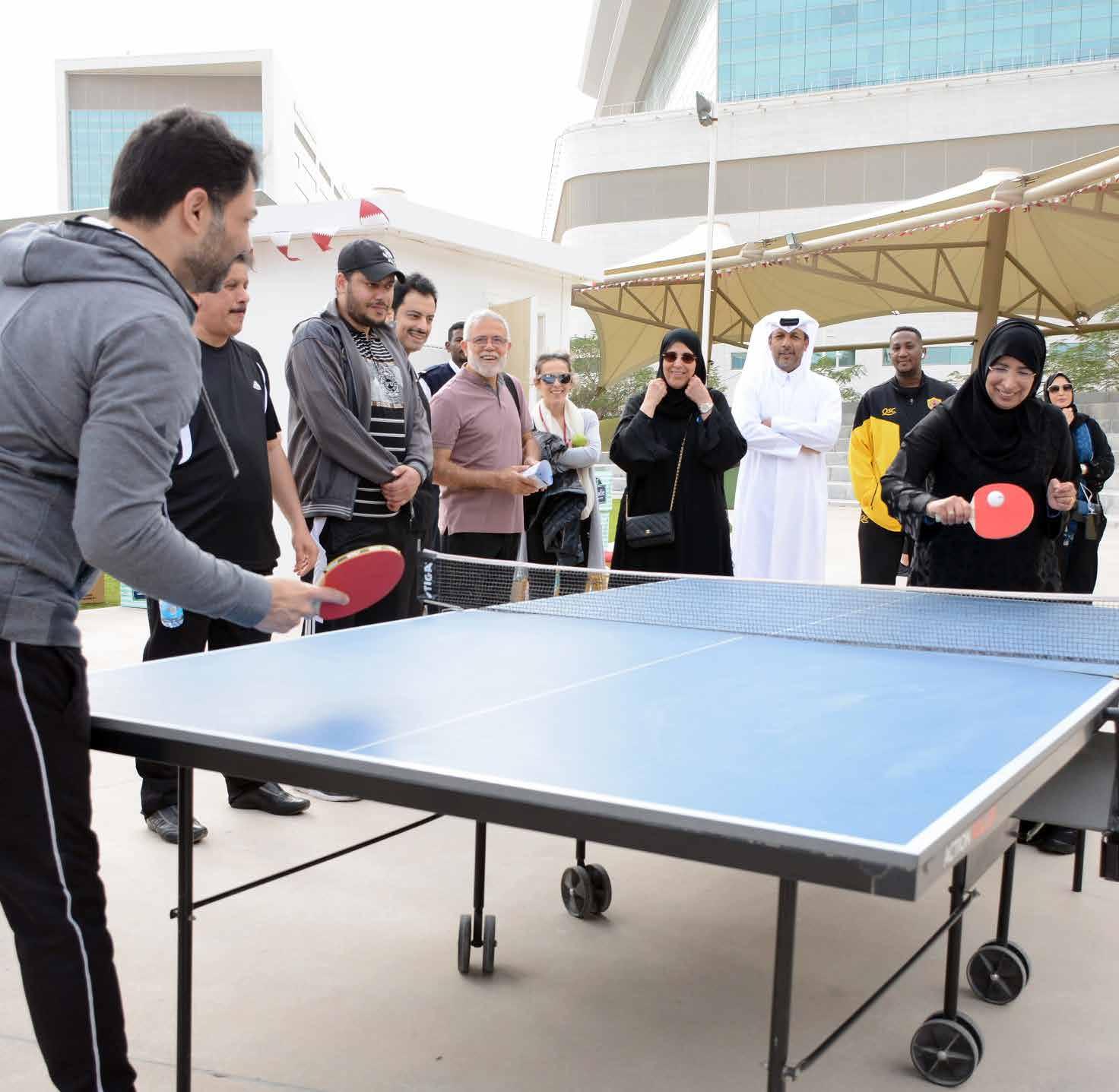
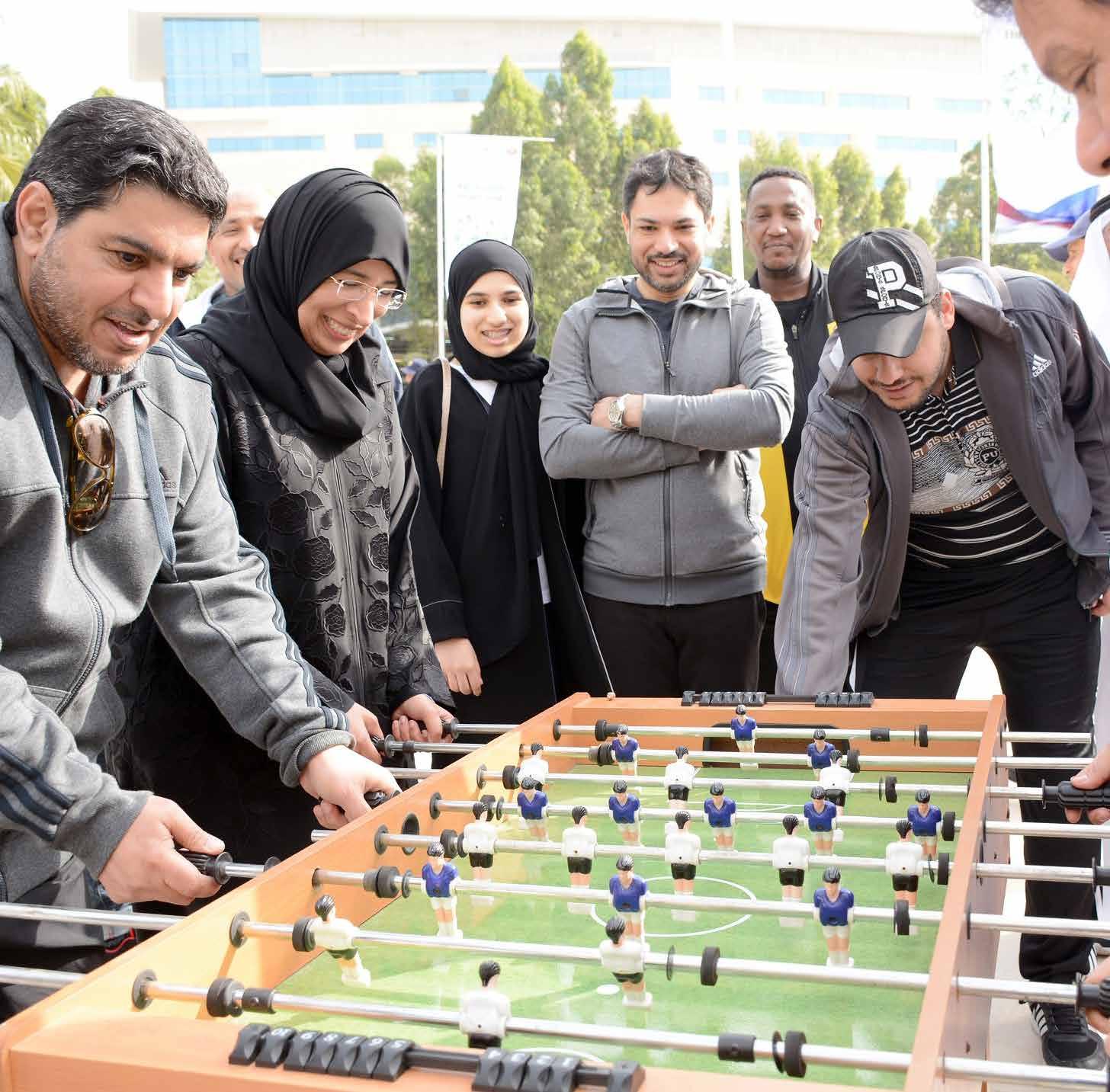
In addition to football (soccer), marathons, and other major sporting events, Qatar National Sports Day also offers smaller-scale activities like ping pong (table tennis) and foosball (table football).
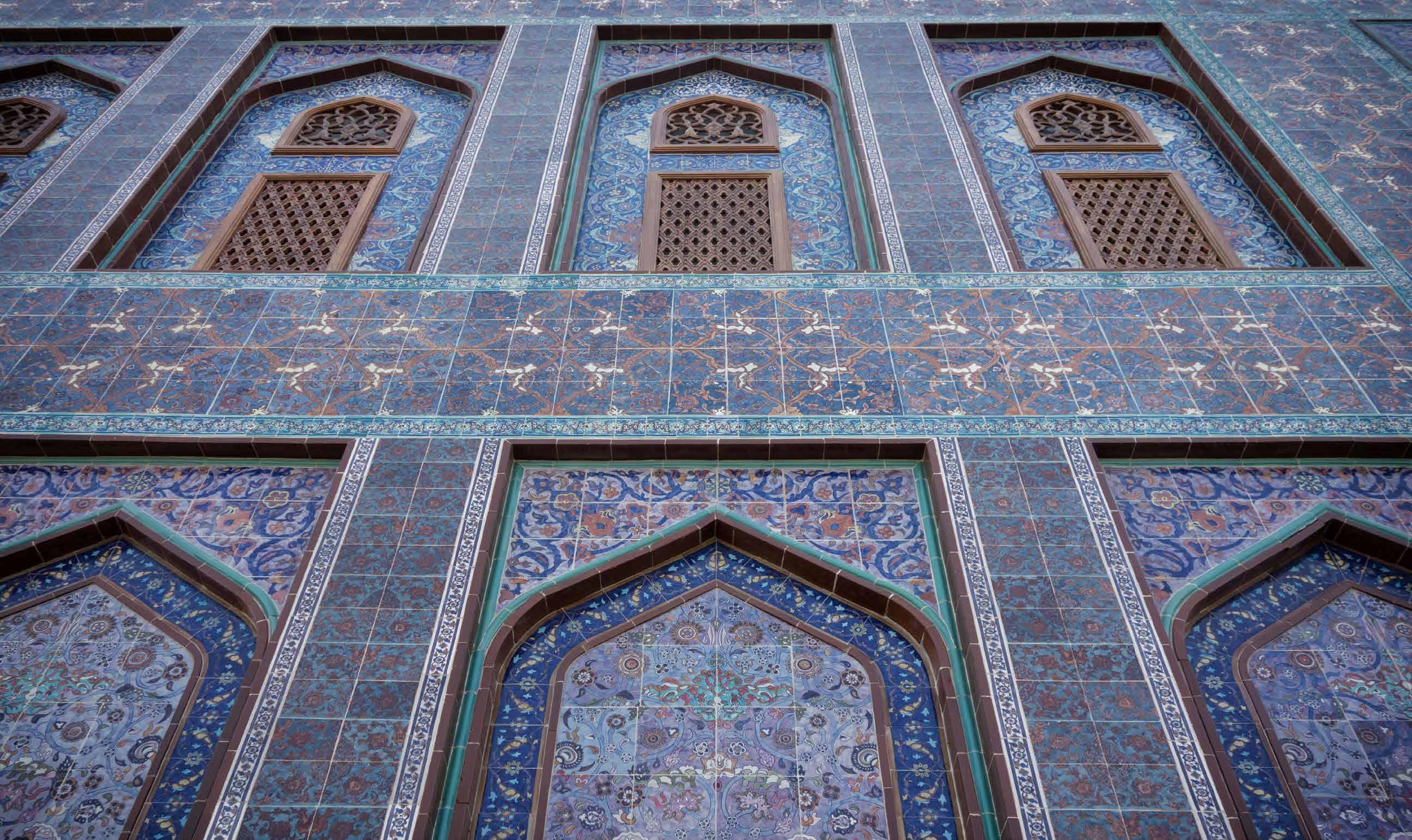
sports that hosts the Longines Champions Tour, one of equestrian showjumping’s most prestigious events. Another sport that has captivated Qatar and Qatari culture is falconry. An ancient hunting technique that nomadic Arabs relied on for their livelihood, the sport of falconry has grown into one of the most important aspects of Qatari culture. Its impact on the arts, architecture, even basic living has been tremendous. In fact, Qatar is one of the only countries in the world that has an entire veterinarian center dedicated solely to falcons located in Souq Waqif. Yet another example of its impact is the giant falcon hood building in Katara.
It would be naïve to discuss the topic of sports in Qatar without speaking of football (or soccer!). Qatar is truly one of the world’s most football-crazed nations. A budding league, a powerful national team that has held the title of Asian champions more than once – these facts indicate strong local interest. And its importance was also exacerbated by the World Cup of 2022. This tournament has brought a great whirlwind of change to Qatar. Infrastructure was expanded, stadiums built, and changes were observed in arts and culture too.
To conclude, we have only seen the beginning of the sports revolution in Qatar. Changes have been tremendous across society, and as we progress through the 21st century, we will see even more improvements in the field of sport. Golf, swimming, track and field, basketball – these are only a few of the many growing sports that were not mentioned and continue to grow in Qatar.
The Evolution of Qatar's Mosques
The many mosques of Qatar, both ancient and modern, symbolize the blending of local heritage despite their aesthetic differences, providing a unique insight into the continuous evolution of the Qatari architectural tradition.
BY SARA ALJABER, QAIC FELLOW
TOP PHOTO: THE KATARA MOSQUE, OR BLUE MOSQUE, LOCATED IN THE KATARA CULTURAL VILLAGE IN DOHA



